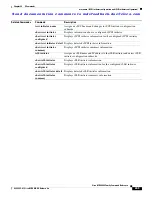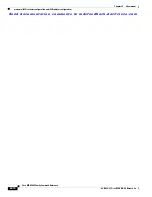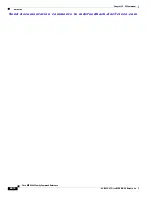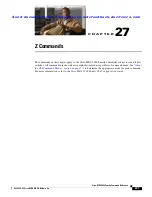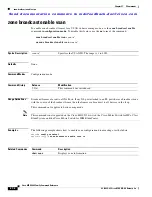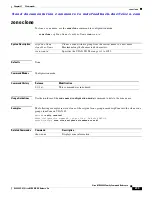
S e n d d o c u m e n t a t i o n c o m m e n t s t o m d s f e e d b a c k - d o c @ c i s c o . c o m
25-12
Cisco MDS 9000 Family Command Reference
OL-18089-01, Cisco MDS NX-OS Release 4.x
Chapter 25 V Commands
vsan policy deny
vsan policy deny
To configure a vsan-based role, use the
vsan policy deny
command in configuration mode. Use the
no
form of this command to delete a configured role.
vsan policy deny
permit vsan
vsan-id
vsan policy deny
no permit vsan
vsan-id
no vsan policy deny
Syntax Description
Defaults
Permit.
Command Modes
Configuration mode—role name submode.
Command History
Usage Guidelines
You can configure a role so that it only allows commands to be performed for a selected set of VSANs.
By default, the VSAN policy of a role is
permit
. In other words, the role can perform commands
configured by the
rule
command in all VSANs. In order to selectively allow VSANs for a role, the
VSAN policy needs to be set to
deny
and
then the appropriate VSANs need to be permitted.
Examples
The following example places you in sangroup role submode.
switch#
config t
switch(config)#
role name sangroup
switch(config-role)#
The following example changes the VSAN policy of this role to deny and places you in a submode where
VSANs can be selectively permitted.
switch(config)#
vsan policy deny
switch(config-role-vsan)
The following example deletes the configured VSAN role policy and reverts to the factory default
(permit).
switch(config-role)#
no vsan policy deny
The following example permits this role to perform the allowed commands for VSANs 10 through 30.
permit
Remove commands from the role.
vsan
vsan-id
Specifies the VSAN ID. The range is 1 to 4093.
Release
Modification
1.2(1)
This command was introduced.


